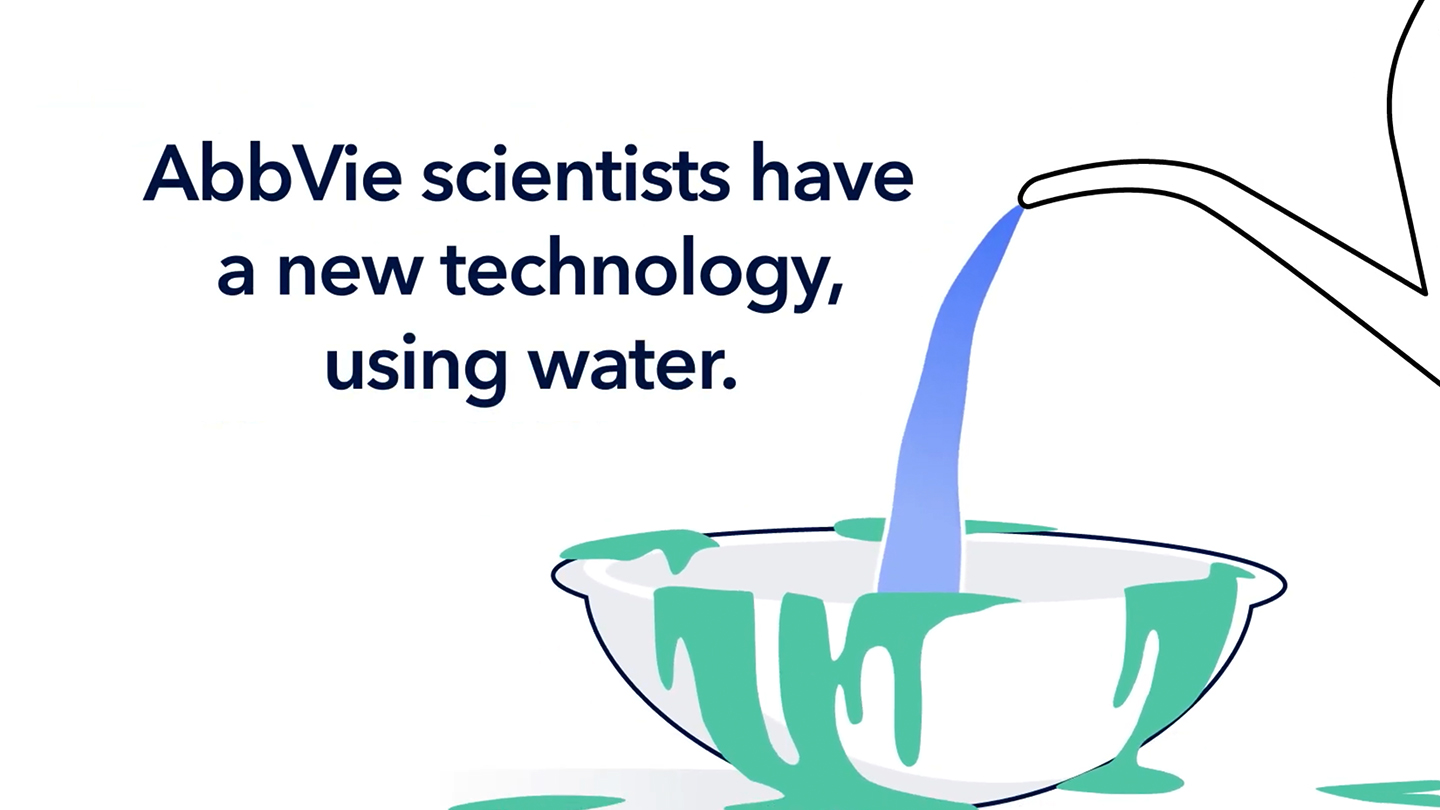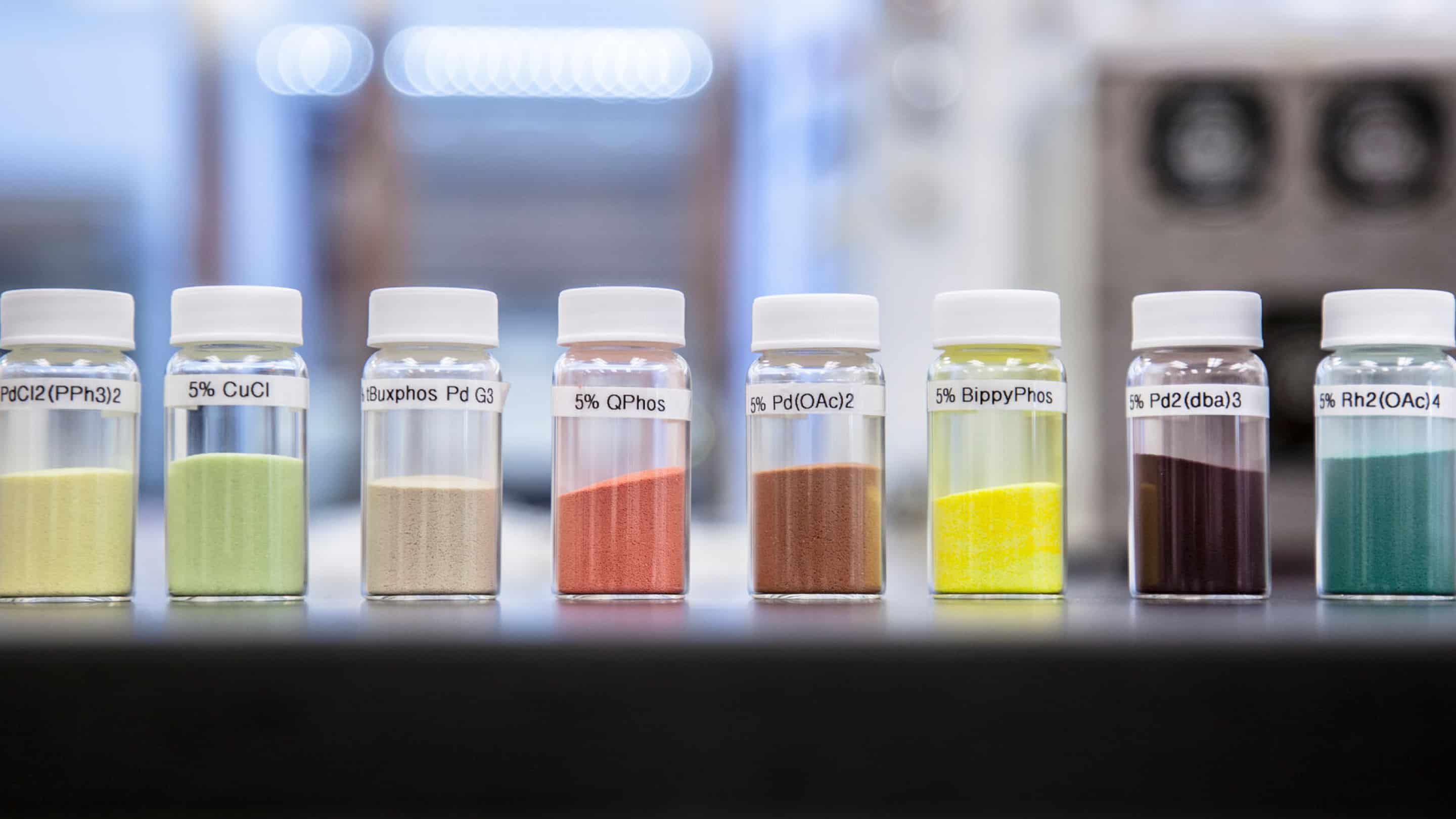Green Chemistry: Cleaner, Faster Chemical Reactions
Can a new approach help accelerate the pace of scientific research and be kinder to the environment?
Wilfried Braje, Ph.D., research scientist, AbbVie, uses technology that creates chemical reactions with less energy and produces less waste.
Changing a 150-year-old approach
Some green initiatives are clear. Skip the plastic straws, save the oceans. Others are more complex, like when you’re trying to overhaul a centuries-old system of conducting chemical reactions.
But according to Wilfried Braje, Ph.D., it doesn’t have to be that complicated. A senior principal research scientist at AbbVie, he believes finding ways to reduce waste and be more environmentally friendly should be second nature for scientists, especially those dedicated to improving lives.
That’s why Braje and his fellow scientists at AbbVie’s labs in Ludwigshafen, Germany were excited to discover a simple but elegant solution to a historic problem: a technology that significantly improves an already revolutionary change to a 150-year-old scientific method. Here, Braje explains how taking advantage of “nature’s favorite solvent” can benefit the environment and help speed up the pace of scientific research.
Q: First, can you explain the problem? Why does chemistry need to “go green”?
Wilfried Braje, Ph.D.: When I explain what I do to friends, I say I see myself as a “scientific cook” with the lab being my kitchen. Think about making a cake - you take various ingredients like oil, sugar and flour, and then see how well all those ingredients react with each other, by baking it (or my preference, by licking the spoon).
Likewise, in science, we’re trying to determine if we have the right ingredients for a possible drug candidate when conducting a chemical reaction. For more than 150 years, scientists have been carrying out those chemical-reaction “recipes” in organic solvents, derived from mineral oil. These organic solvents are expensive, toxic and often flammable, but that’s how it was always done and it worked. The organic solvent-based science enables many reactions that have been used to develop breakthrough medicines.
Q: So how, exactly, is your team improving the process?
Braje: Our approach circles back to the “founding father” of chemistry in water, Professor Bruce H. Lipshutz, who led a team of researchers at the University of California in Santa Barbara. They succeeded in performing several chemical reactions needed for the production of active pharmaceutical ingredients in water using nanomicelles in water, rather than in harmful organic solvents. This process leaves behind virtually no waste. In 2014, I read about their work and connected with Professor Lipshutz. Eighteen months later, our team came up with our own technology allowing chemical reactions to proceed very efficiently in water.
Our technology significantly improves the initial chemistry-in-water method using a benign food additive. All of the starting materials are solubilized in water. And similar to the original process from the Lipshutz group, very little waste remains.
It also requires less energy. You go from carrying out reactions at 130° temperature in organic solvents to room temperature using our technology.
Q: Do you recall the moment when you and your team made the discovery?
Braje: It was absolutely memorable. Two research scientists on the team, Tanja Lindner and Johanna Klee, had performed many chemical reactions for a neuroscience project. When we used the new additive, we quickly noticed the reaction time needed was reduced from hours to one minute. It seemed unbelievable. We repeated that particular experiment three times to convince ourselves that what we observed was the real deal. Was this “recipe” correct? They got blisters on their hands from taking so many samples for analysis in such a short amount of time. Our team will never forget that moment.
We’ve learned so much, and are still discovering new aspects every day because so many other colleagues have joined the effort to further develop and apply this technology to many different chemical reactions.
Q: Other than producing less waste, what are some other advantages of chemistry in water?
Braje: Chemical reactions are significantly more efficient. We don’t need as high temperatures or energy intake, but amazingly we’re seeing much shorter reaction times. What used to take more than 12 hours has been cut down to minutes, or even seconds. All of these factors ultimately lead to getting potential medicine to patients faster while using fewer resources. Most surprisingly, we are able to carry out chemical reactions successfully that didn’t work using state-of-the-art methodologies. Any time when we discover that something works now that previously didn’t, we can more quickly move onto the next phase of production or start over with a new “recipe.”
In reality, while we’re excited about our improvement to the process, chemical reactions in water is nothing new. If you think about the human body, there are about 37 trillion cells and millions of chemical reactions per cell per second taking place. Nature’s favorite solvent for billions of years has been water, and we’re simply taking advantage of this natural approach.
Q: What’s next for AbbVie’s chemistry in water technology?
Braje: Our team continues to collaborate with other academic partners to encourage the industry to “go green". I know the movement is growing, and this technology will definitely excite the next generation of scientists because of its efficiency.
AbbVie is also a member of the American Chemical Society Pharma Roundtable for Green Chemistry, where I have the pleasure to represent our company. After I presented some of our results last year, a sub-team on Chemistry in Water was formed, and we are working now together to advance this topic.
For one research project related to oncology, I’ve witnessed successful reactions in water when that same reaction, to prepare a drug molecule, failed in organic solvents. That for me is very exciting. Results are unprecedented in many cases. So for us, there’s no looking back.
Media inquiries:
Email: [email protected]



